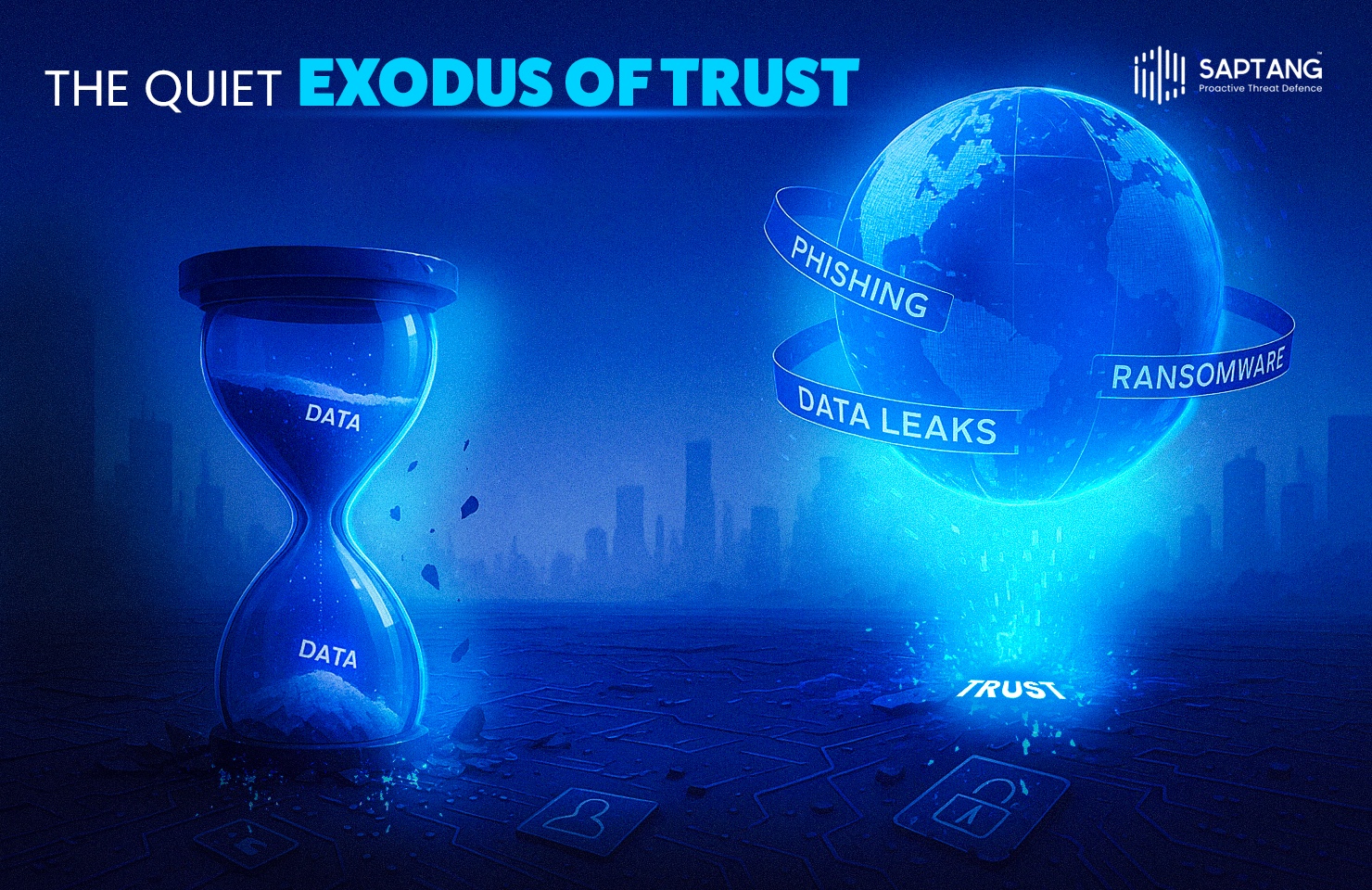
By Karthikeyan Sachithanandam, Researcher
A cybercriminal scans through a trove of stolen identities, including names, passwords, credit card numbers, and medical records, which flicker across the display in a darkened apartment somewhere in the world. This is not the setup for a thriller from Hollywood, mind you. One breach at a time, stolen data insidiously incurs the credibility of the modern internet that we rely upon every day.
With suppliers (hackers, ransomware gangs), distributors (the dark web), and buyers (fraudsters, state sponsored actors), the illicit trade in compromised data has grown into a multibillion-dollar shadow economy of cybercrime. The trust upon which the digital world operates is compromised, not individual privacy or commercial confidentiality.
Cyberattacks are now multi-pronged, systemic operations that are perpetually conducted over a period of months and years, not isolated incidents. A single violation can set off a chain reaction:
First compromise: Access is gained – phishing email, unpatched software, stolen credentials.
Lateral movement: Attackers hunt for relevant data, escalate privileges, explore networks.
The act of copying or sending private information to become public by distant servers, is known as data exfiltration.
Ransomware deployments encrypt and cash in to retrieve important, urgent systems.
Leak threats to expose stolen information to cash or else expose private information to the world.
Once stolen, data never leaves, and can be seen years later, repackaged and resold for reuse in future attacks.
Data leaks expose high volumes of personal and business-related data, whether the source is insider threats, cloud storage configuration mistakes, or an umbrella organization breach. In contrast to a singular hack, leaks often go undetected for months, giving plenty of opportunity for hackers to siphon and take advantage of the same leak multiple times.
We no longer just have file encryption; we now also have a hybrid extortion model as ransomware. Encryption Important systems are locked and cannot be accessed. Stealing your data prior to encryption. The threat of data being leaked in public to coerce the target of ransom paid. Leaked data is still a potential leak, once an organization opts for a back-up resource
As a result of the rampant suffix of passwords, each username and passwords are among the most serious dangers online. One leaked credential can provide access to:
Dark Web Reality: Bulk credential lists are bought for as little as $1 per. This practice is known as credential stuffing; attackers will use stolen logins on many websites with automated tools to conduct tests.
Infostealer malware, like Raccoon and Redline, silently collects:
Malware logs are not the same as breach logs because they provide real-time access to a victim’s digital life.
Despite advances in cybersecurity, breaches are still on the rise because of:
“Never trust, always verify”: Any access request is authenticated.
Least privilege access: Grant users only the rights that they absolutely need to do a job.
Hardware keys, authenticator apps, or SMS texts are effective in preventing 99 percent of credential theft.
Stay vigilant on compromised credentials (Dark Web scans, Have I Been Pwned).
Assume a breach: Keep an eye open for probable threats.
Close to 70% reduction in susceptibility to phishing can be attained via repeated drills & exercises.
Immutable backups shield recovery strategies from ransomware.
Having a predefined breach response plan limits liability and downtime.
Restoring the silent pull of trust and confidence in the digital age requires a radical shift away from a security philosophy based on products and compliance; however, it isn’t an impossible feat. They have to engage in proactive human-centered defenses strategies and follow compliance checklists. Individuals have to remain vigilant, use a password manager, enable MFA everywhere and track data leaks. Data protection is no longer an option but a social necessity in a world where data is the new currency. The question is no longer whether we will be targeted, but how well we are prepared.
In summary: In an increasingly vulnerable digital world, cyber security is a test of our societal resilience not just our technical resilience.